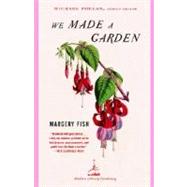
| Introduction to the Modern Library Gardening Series | p. vii |
| Foreword | p. 3 |
| Introduction | p. 5 |
| The House | p. 7 |
| The Garden | p. 10 |
| The Lawn | p. 17 |
| Making Paths | p. 22 |
| Clothing the Walls | p. 27 |
| Hedges | p. 33 |
| The Terraced Garden | p. 39 |
| Planting | p. 44 |
| Staking | p. 51 |
| Gardening with a Knife | p. 53 |
| Watering | p. 58 |
| Dahlias | p. 61 |
| Some Failures | p. 64 |
| Composting | p. 67 |
| The Value of Evergreens | p. 72 |
| We Made Mistakes | p. 75 |
| The Water Garden | p. 80 |
| Rock Gardening | p. 82 |
| The Paved Garden | p. 88 |
| The Herb Garden | p. 94 |
| Early and Late | p. 100 |
| Mixed Borders | p. 108 |
| What Shall I Plant? | p. 114 |
| Living and Learning | p. 120 |
| Index | p. 123 |
| Table of Contents provided by Syndetics. All Rights Reserved. |
The New copy of this book will include any supplemental materials advertised. Please check the title of the book to determine if it should include any access cards, study guides, lab manuals, CDs, etc.
The Used, Rental and eBook copies of this book are not guaranteed to include any supplemental materials. Typically, only the book itself is included. This is true even if the title states it includes any access cards, study guides, lab manuals, CDs, etc.
Excerpted from We Made a Garden by Margery Fish
All rights reserved by the original copyright owners. Excerpts are provided for display purposes only and may not be reproduced, reprinted or distributed without the written permission of the publisher.